Imagine you're part of a marketing team, and your desk is scattered with reports, spreadsheets, and dashboards filled with data. You're overwhelmed by the sheer volume of information but struggle to extract actionable insights that can guide your strategy. Sound familiar? In today’s data-driven world, many businesses face this dilemma, trying to decipher complex data sets without the right tools. Traditional analytics often falls short, leaving teams frustrated and decision-making sluggish. That’s where AI analytics software comes into play. By harnessing the power of artificial intelligence, these tools can transform raw data into clear, actionable insights, enabling marketers to make informed decisions quickly and effectively.
AI analytics software not only simplifies data interpretation but also enhances efficiency, helping you identify trends and patterns that were previously hidden. As more companies adopt these advanced tools, understanding their features and benefits becomes crucial for staying competitive. By the end of this article, you'll know exactly how AI analytics software can elevate your marketing efforts and which tools are the best in the market. Let's dive into the top AI analytics software solutions that can help you optimize your marketing strategies.
Best for: Marketing professionals seeking comprehensive attribution and analytics.
Cometly is an advanced marketing attribution platform designed to empower businesses with real-time insights into their marketing performance.
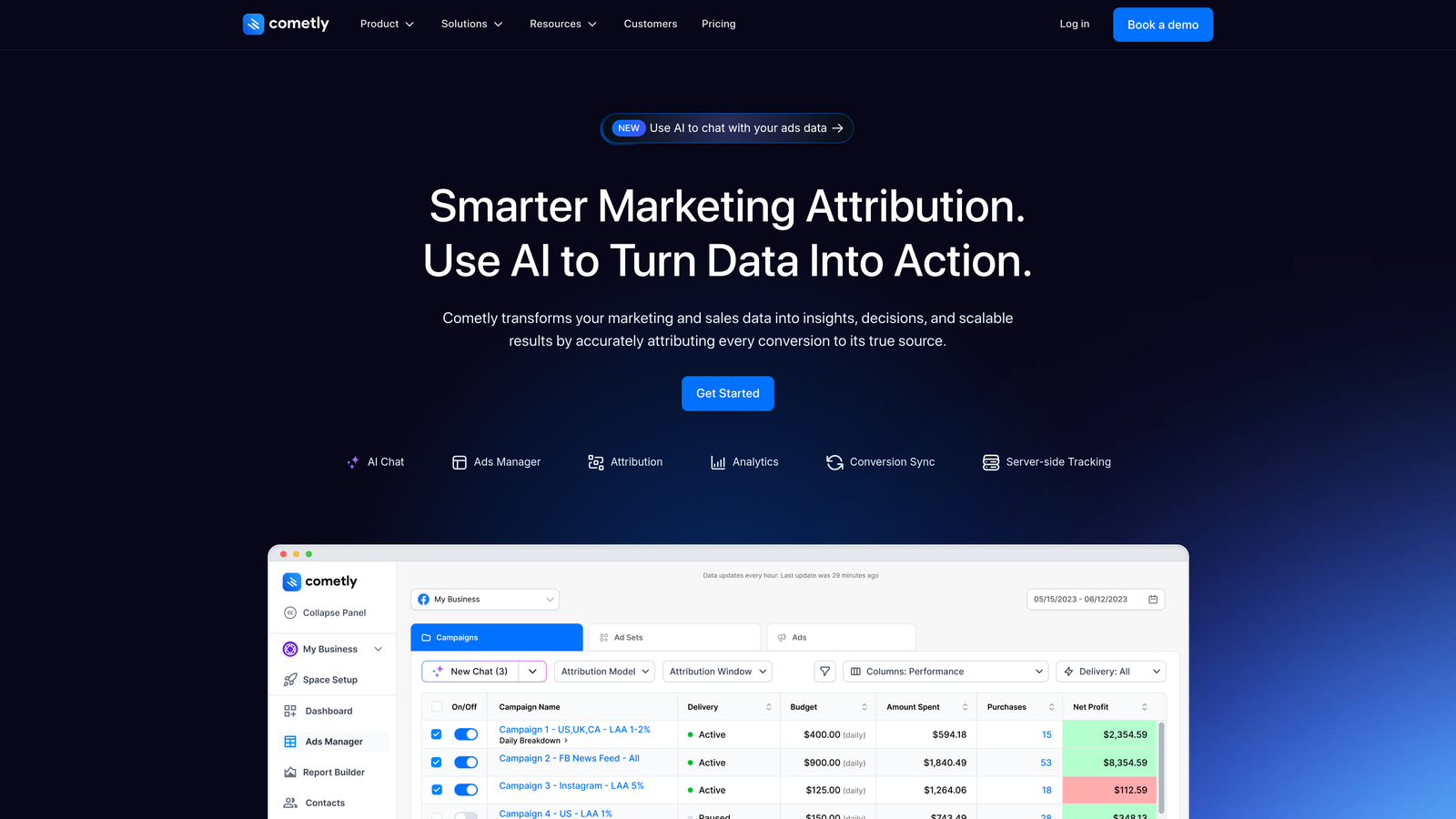
Overview & Background: Cometly leverages AI to provide multi-touch attribution, allowing marketers to understand the effectiveness of various channels in driving conversions. With a user-friendly interface, it caters primarily to marketing teams looking to optimize their ad spend and improve campaign effectiveness.
Key Features:
1. Real-Time Optimization: Cometly’s AI capabilities allow for continuous adjustments to campaigns based on real-time data, ensuring that marketing strategies remain effective.
2. Data Accuracy: With advanced algorithms, Cometly enhances data reliability, giving marketers confidence in their insights.
3. User-Friendly Reporting: The tool offers intuitive dashboards that make it easy to visualize performance metrics and share insights across teams.
How It Works: Users can integrate Cometly with various data sources, including CRM systems and advertising platforms, to compile comprehensive reports. The setup is straightforward, allowing teams to get up and running quickly.
Pricing & Plans: Cometly offers flexible pricing based on user needs, with tiered options to accommodate different business sizes.
Why It's Great for Marketing Teams: Cometly's advanced features enable teams to make faster decisions, ultimately leading to improved ROI from marketing campaigns.
Best for: Businesses already integrated within Google’s ecosystem.
Google Analytics 4 enhances your marketing efforts with robust analytics capabilities tailored for the modern web.
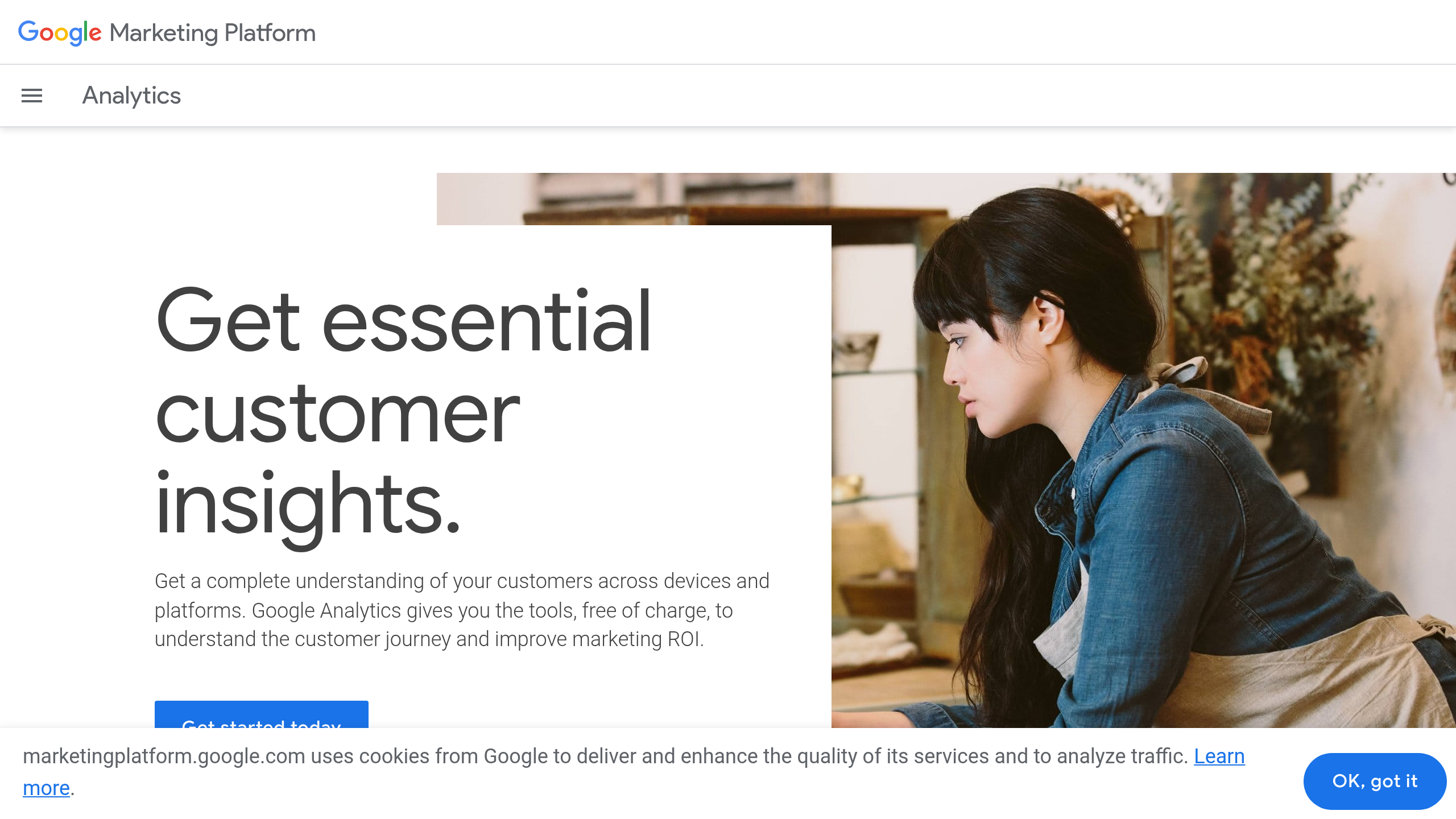
Overview & Background: As the latest iteration of Google’s popular analytics platform, Google Analytics 4 utilizes machine learning to automatically highlight trends in your data. It’s especially beneficial for businesses that rely heavily on Google Ads and other Google services.
Key Features:
1. Event Tracking: GA4 allows businesses to track specific user interactions, providing deeper insights into customer behavior.
2. Audience Insights: The tool offers detailed audience segmentation, helping marketers tailor their strategies to specific user groups.
3. Machine Learning Enhancements: Google Analytics 4 uses AI to predict user actions, assisting marketers in proactive decision-making.
How It Works: Implementation involves setting up a GA4 property and linking it to your website or app. The platform is designed to integrate seamlessly with other Google tools.
Pricing & Plans: Google Analytics 4 is free for all users, with a premium version available for enterprise-level needs.
Why It's Great for Small to Medium-Sized Businesses: Its accessibility and powerful features make GA4 an ideal choice for businesses looking to establish a strong data-driven marketing strategy.
Best for: Enterprises requiring deep customization and advanced insights.
Adobe Analytics offers a comprehensive suite of analytics tools designed for large organizations.
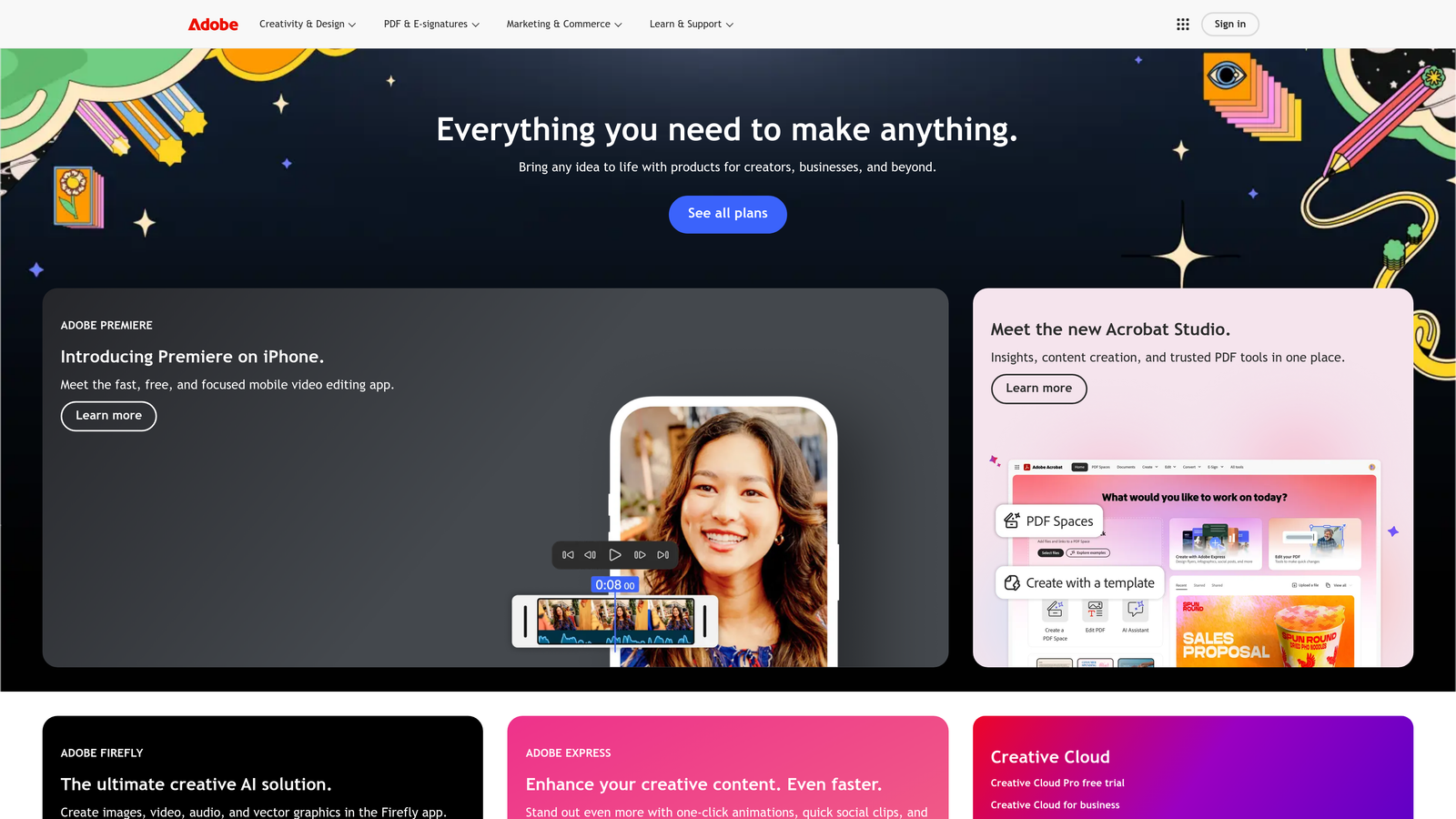
Overview & Background: Adobe Analytics plays a crucial role in the Adobe Experience Cloud, providing businesses with powerful analytics capabilities. It’s particularly beneficial for companies needing detailed segmentation and reporting tools.
Key Features:
1. Predictive Analytics: Adobe Analytics leverages AI to forecast future trends, enabling businesses to strategize effectively.
2. Powerful Segmentation: The platform allows for advanced segmentation, helping marketers understand their audiences better.
3. Comprehensive Reporting Tools: Detailed reporting options provide insights across multiple channels, making it easier to measure performance.
How It Works: Users can set up Adobe Analytics by linking it to their existing data sources and configuring tracking settings to suit their needs.
Pricing & Plans: Adobe Analytics offers customized pricing based on specific business requirements, making it suitable for larger enterprises.
Why It's Great for Large Organizations: Its scalability and extensive feature set cater to the intricate needs of larger companies, ensuring they can manage vast amounts of data effectively.
Best for: Data visualization and reporting.
Tableau excels in transforming complex data into stunning visual reports.
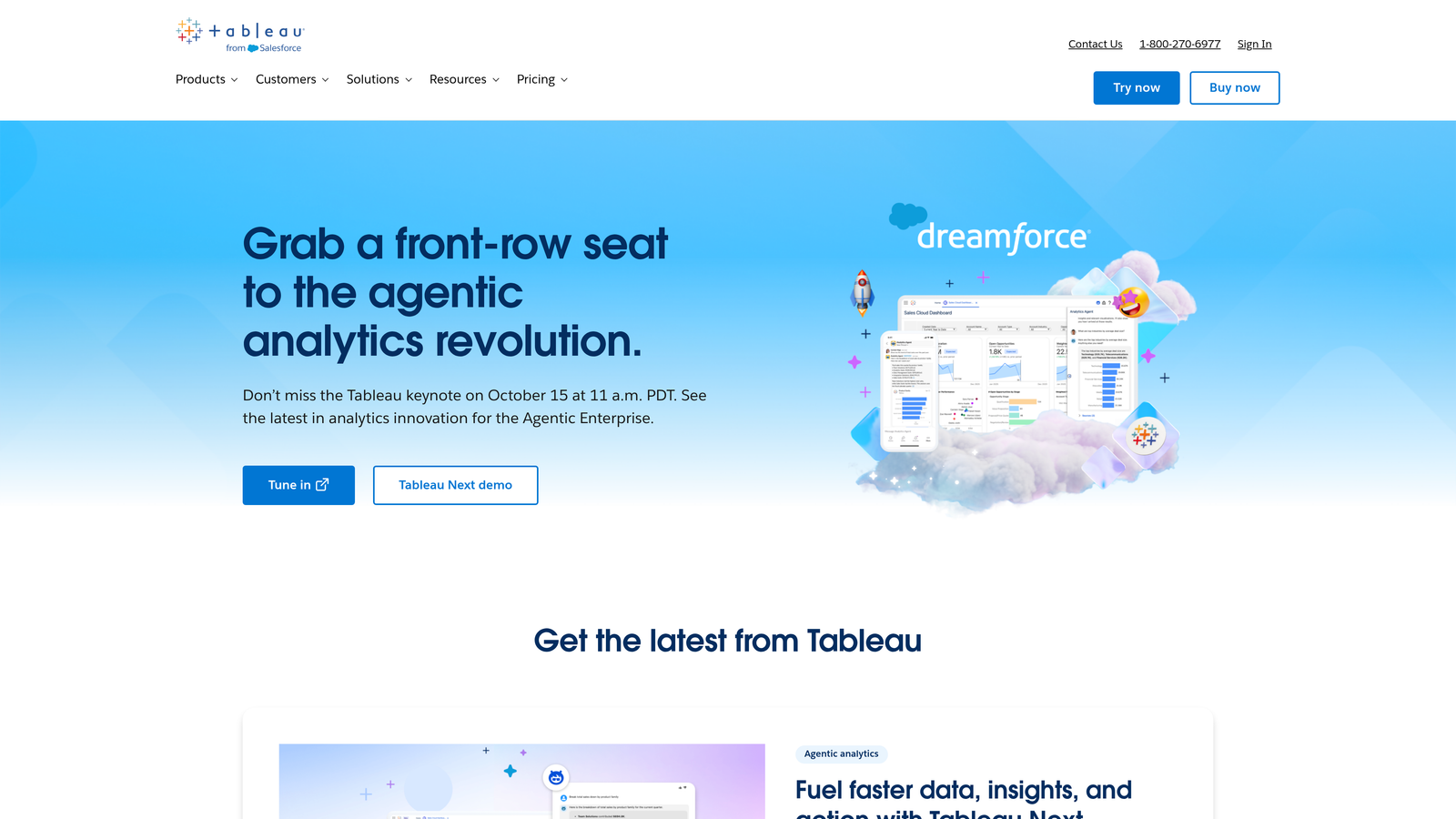
Overview & Background: Tableau is a leading data visualization tool that empowers users to create interactive and shareable dashboards. It’s particularly useful for teams that need to present data in a visually engaging manner.
Key Features:
1. Real-Time Data Analytics: Tableau allows users to visualize data in real-time, helping teams make immediate decisions.
2. Diverse Integration Options: The platform supports integration with various data sources, enhancing its utility.
3. User-Friendly Interface: Tableau’s intuitive design makes it accessible for users of all skill levels.
How It Works: Users can connect Tableau to their data sources, create visual representations, and share their insights easily across their organization.
Pricing & Plans: Tableau offers various pricing tiers based on user needs, including options for individuals and enterprises.
Why It's Great for Companies Needing Strong Visual Data Representation: Tableau’s focus on visualization helps teams interpret data more effectively, leading to better decision-making.
Best for: Businesses seeking AI-driven insights.
IBM Watson Analytics provides powerful analytics features driven by AI.

Overview & Background: IBM Watson Analytics is designed to help businesses uncover insights through AI and natural language processing. It’s ideal for organizations looking to leverage AI for deeper data understanding.
Key Features:
1. Natural Language Processing: Users can ask questions in natural language, and Watson will provide insights based on data analysis.
2. Automated Data Discovery: The platform automatically identifies trends and anomalies, making it easier for users to understand their data.
3. Predictive Analytics: IBM Watson Analytics offers robust predictive modeling capabilities, helping businesses forecast future trends.
How It Works: After linking your data sources, users can interact with the software through an intuitive interface to gain insights quickly.
Pricing & Plans: IBM Watson Analytics operates on a subscription model, with pricing based on the level of service and features required.
Why It's Great for Organizations with Advanced Data Needs: Its sophisticated AI capabilities make it a powerful ally for businesses striving to make data-driven decisions.
Best for: In-depth data analysis and visualization.
SAS Visual Analytics combines data discovery and visualization in one platform.
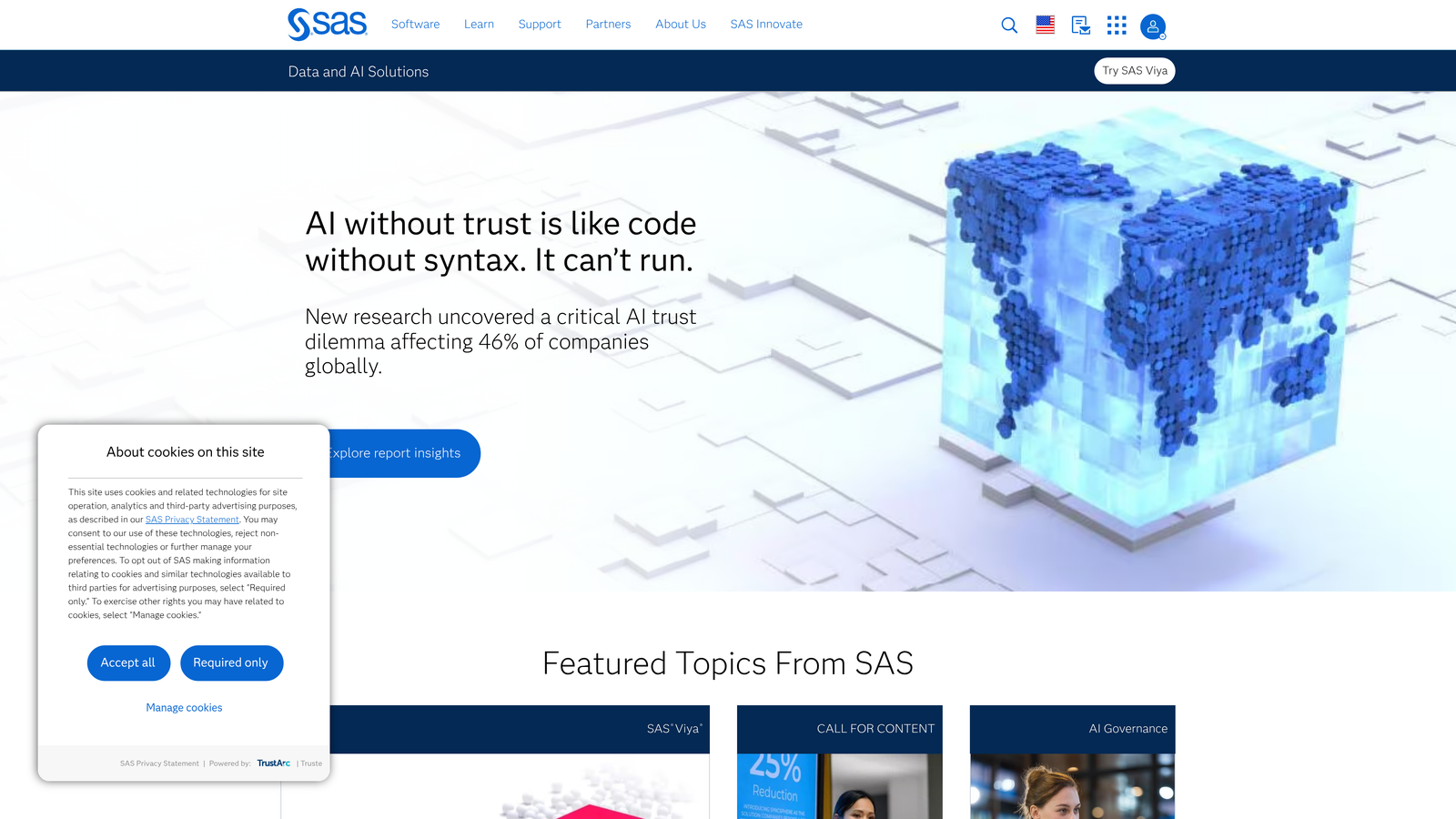
Overview & Background: SAS Visual Analytics is designed for organizations that need to perform complex data analysis and present findings through visual storytelling.
Key Features:
1. Interactive Dashboards: Users can create dashboards that allow for interactive data exploration.
2. Advanced Analytics: The platform integrates predictive analytics, enabling users to forecast trends.
3. Data Governance: SAS ensures data integrity and governance, which is vital for large organizations.
How It Works: SAS Visual Analytics connects to various data sources, simplifying the process of data analysis and visualization.
Pricing & Plans: Pricing varies based on deployment options, including cloud and on-premises solutions.
Why It's Great for Organizations Focused on Data Storytelling: SAS Visual Analytics is particularly effective for creating compelling narratives from data, making it easier to share insights across teams.
Best for: Embedded analytics and business intelligence.
Looker provides a powerful platform for businesses wanting to integrate analytics into their workflows.
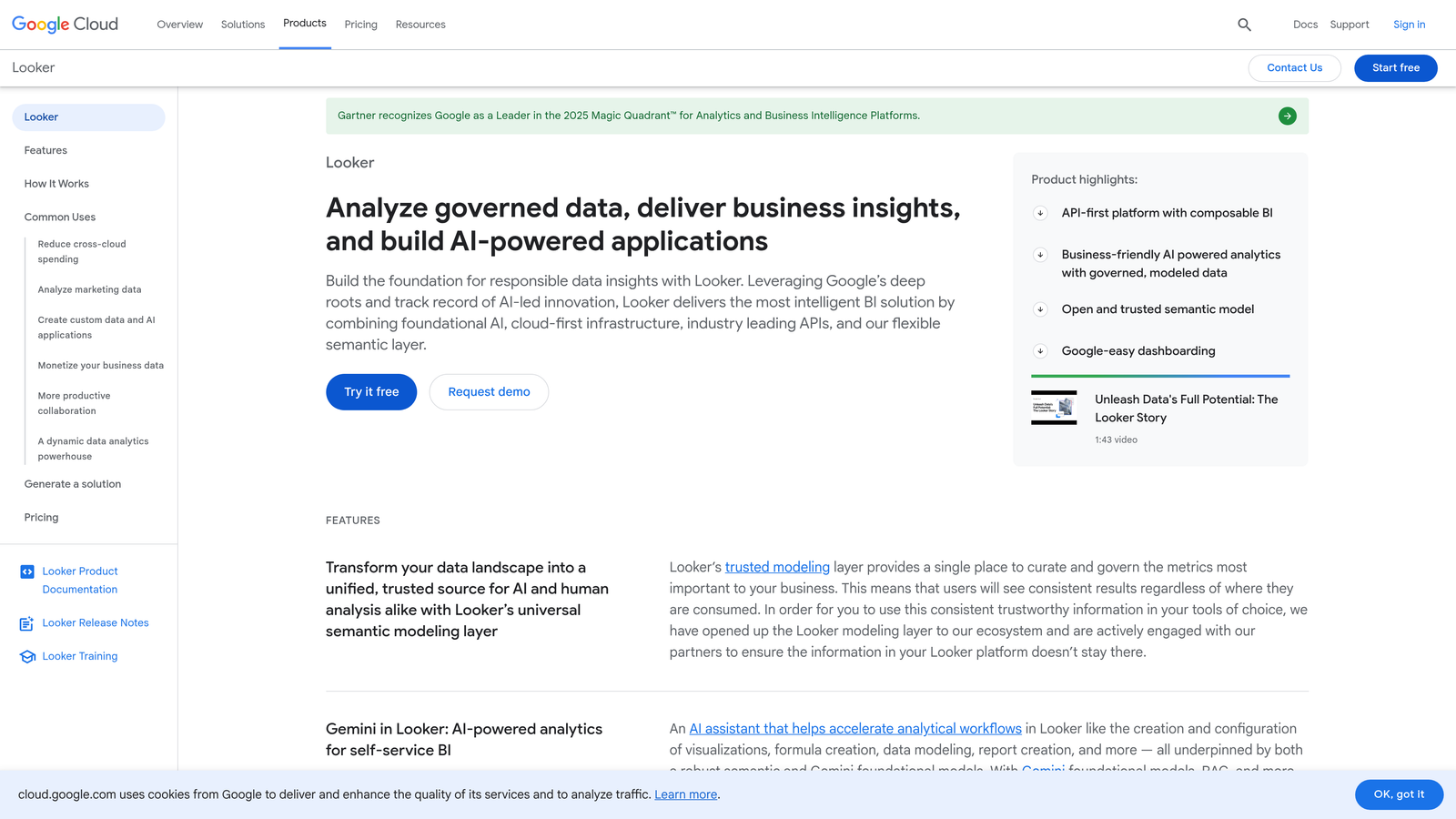
Overview & Background: Looker is a business intelligence tool that allows users to create custom reports and dashboards tailored to their specific needs.
Key Features:
1. Customizable Dashboards: Users can design dashboards that reflect their unique data requirements.
2. Data Modeling: Looker’s modeling layer ensures that users can define data relationships easily.
3. Collaboration Features: The platform supports collaborative analytics, allowing teams to work together effectively.
How It Works: Looker integrates with existing data sources and provides a robust framework for building reports and visualizations.
Pricing & Plans: Looker offers competitive pricing based on the number of users and the features required.
Why It's Great for Businesses Wanting Integrated Analytics: Looker’s ability to embed analytics into workflows helps teams make data-driven decisions seamlessly.
Best for: Associative data exploration and visualization.
Qlik Sense offers a unique approach to data analytics, focusing on associative data models.
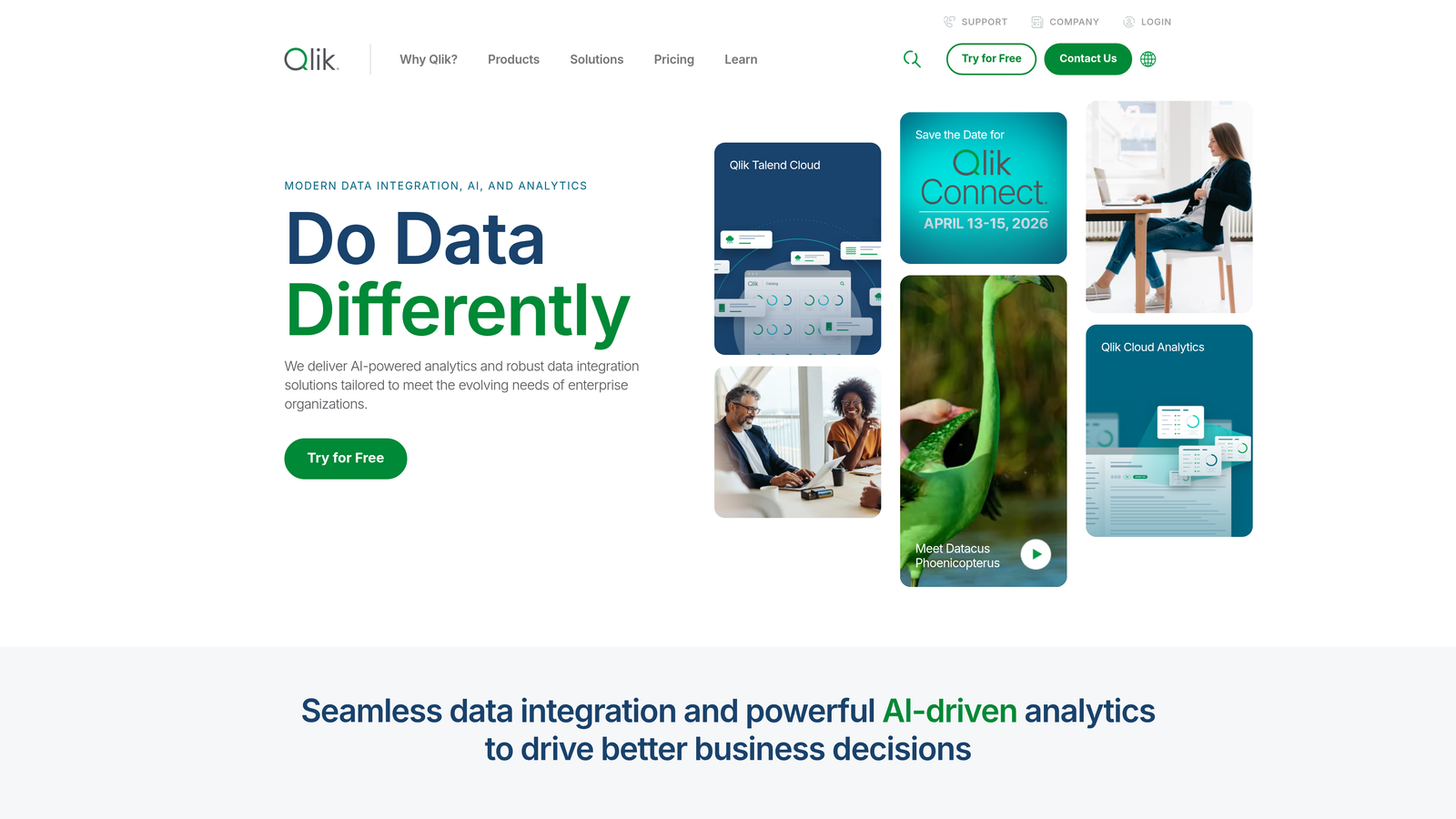
Overview & Background: Qlik Sense allows users to explore data freely and discover insights through its associative model, which connects data across different sources.
Key Features:
1. Associative Data Model: This feature enables users to see connections and relationships in their data.
2. Self-Service Analytics: Qlik Sense empowers users to create their own reports without relying on IT.
3. Collaboration Tools: The platform offers features that facilitate teamwork and data sharing.
How It Works: Users can connect Qlik Sense to their data sources and start visualizing insights immediately.
Pricing & Plans: Qlik Sense has flexible pricing models to cater to different business needs.
Why It's Great for Organizations Seeking Data-Driven Insights: Its unique associative model allows users to uncover insights that traditional tools may overlook.
Best for: Real-time business intelligence and analytics.
Domo provides a comprehensive platform that combines data visualization and business intelligence tools.
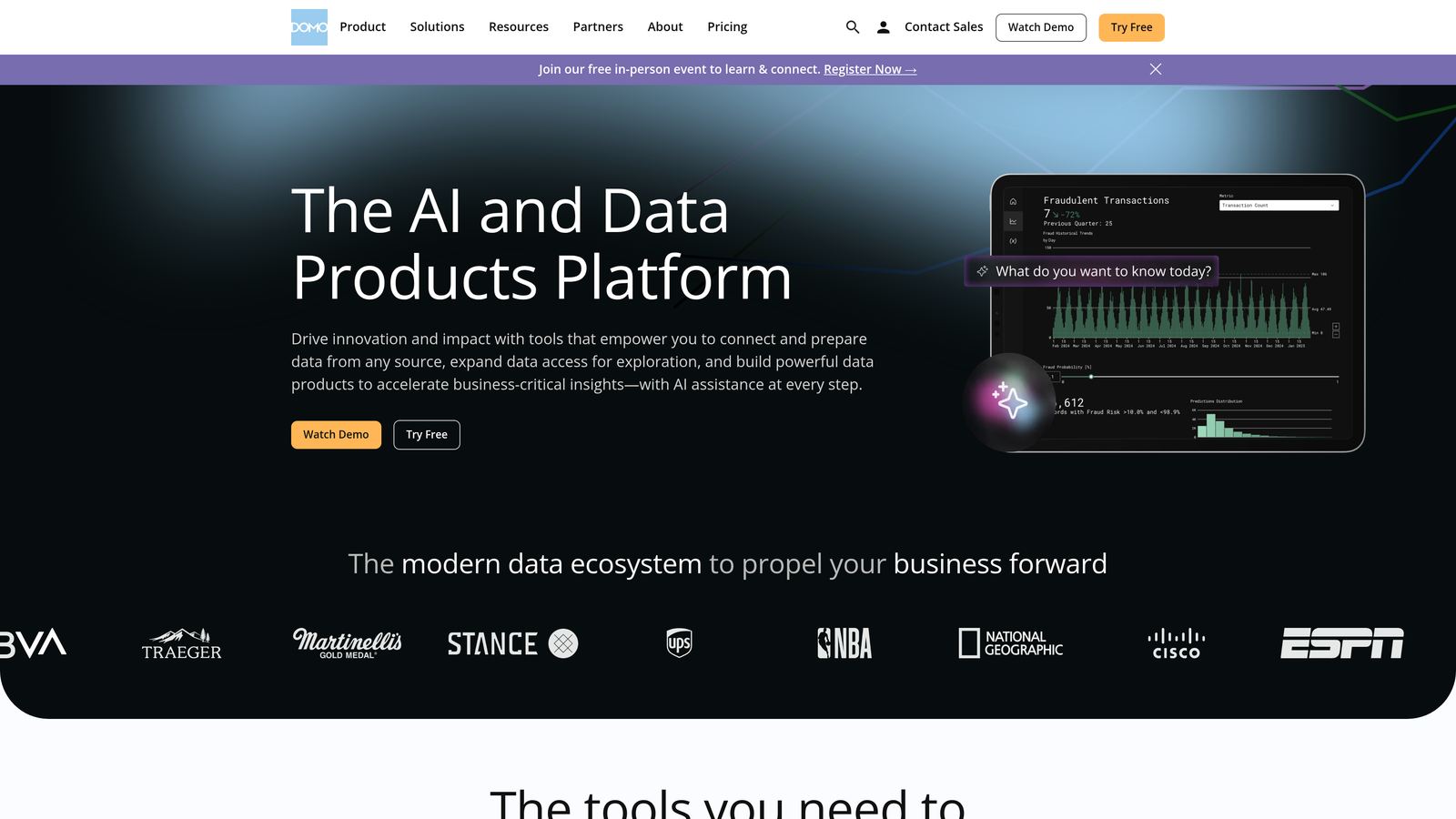
Overview & Background: Domo is designed to help businesses harness the power of their data through real-time analytics and visual reporting.
Key Features:
1. Real-Time Data Integration: Domo connects to various data sources, providing up-to-date insights.
2. Mobile Accessibility: Users can access data on the go, enhancing flexibility in decision-making.
3. Collaboration Features: Domo supports team collaboration through shared dashboards and reports.
How It Works: Users can connect their data sources to Domo and start analyzing performance metrics instantly.
Pricing & Plans: Domo offers tiered pricing based on user needs, making it suitable for businesses of all sizes.
Why It's Great for Companies Needing Real-Time Insights: Domo’s emphasis on real-time analytics ensures that businesses can react swiftly to changing conditions.
Best for: Embedded analytics and data fusion.
Sisense is a powerful analytics platform that allows businesses to embed analytics into their applications.
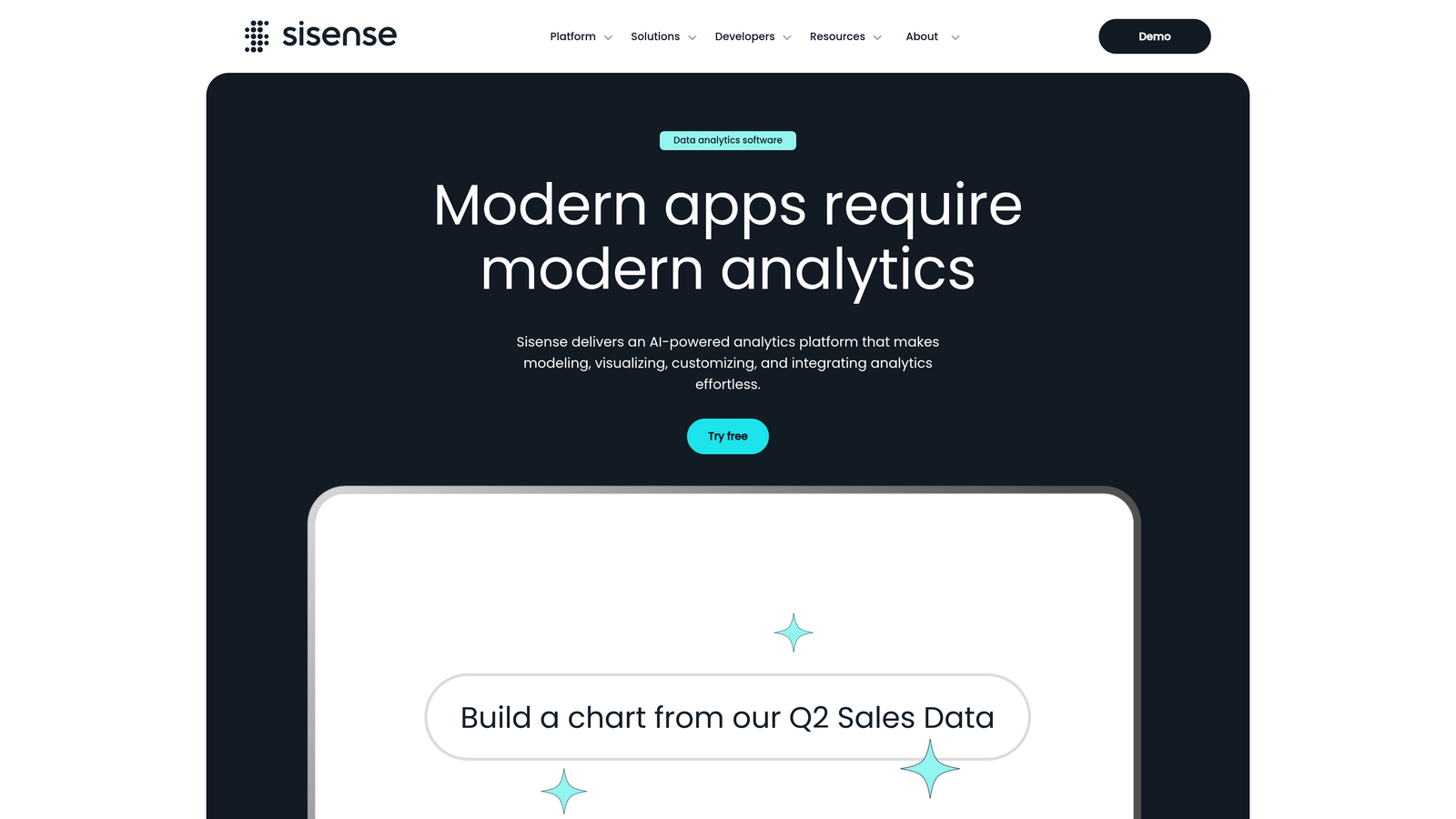
Overview & Background: Sisense focuses on simplifying complex data for end-users, allowing companies to perform analytics without needing extensive technical expertise.
Key Features:
1. Data Fusion: Sisense’s ability to combine data from disparate sources into a single view is a key differentiator.
2. Customizable Dashboards: Users can create dashboards tailored to their specific business needs.
3. AI-Driven Insights: The platform utilizes AI to provide predictive analytics and insights.
How It Works: Sisense integrates with various data sources and offers a user-friendly interface for building reports and dashboards.
Pricing & Plans: Pricing is based on the number of users and features, making it flexible for various businesses.
Why It's Great for Companies Looking to Embed Analytics: Sisense’s focus on embedding analytics helps organizations deliver insights directly within their applications.
Choosing the right AI analytics software can make a significant difference in how effectively your marketing efforts translate into results. From tools like Cometly, which excels in multi-touch attribution, to versatile platforms like Google Analytics 4 and Adobe Analytics, each option provides unique capabilities tailored to different business needs.
As you evaluate these tools, consider your specific requirements, the features that align with your marketing objectives, and the budget you have available. Regardless of which tool you choose, leveraging AI analytics can lead to improved decision-making and better marketing outcomes.
Ready to transform your marketing analytics? Get your free demo today and see how AI can enhance your decision-making process.
Learn how Cometly can help you pinpoint channels driving revenue.
.svg)
Network with the top performance marketers in the industry